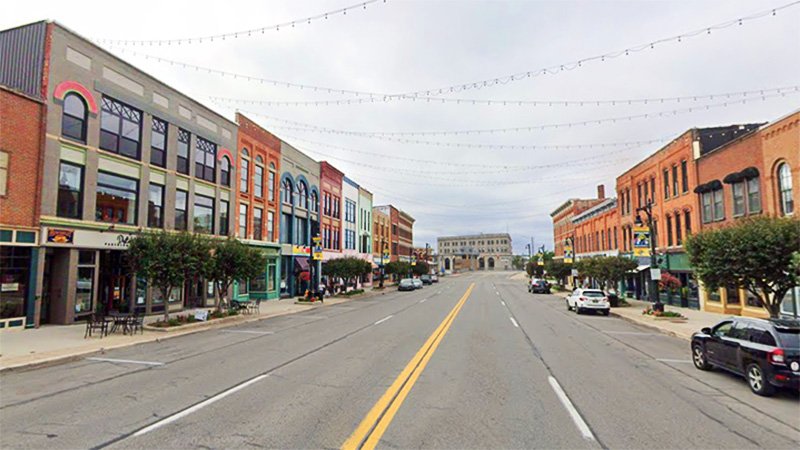Foxconn Con
An electronics factory in Shenzhen (Source: glue works)
This week a major economic development deal was announced at the White House. Here's how the Milwaukee Journal Sentinel reported it:
Foxconn Technology Group on Wednesday pledged to invest $10 billion to build a display panel plant in Wisconsin that could employ up to 13,000 workers and draw up to $3 billion in subsidies from state taxpayers — a deal that could ripple through the economy and 2018 elections.
"This is a great day for American workers and manufacturers and everyone who believes in the concept and the label 'Made in the USA,' " said an ebullient President Donald Trump at the White House announcement.
I'm just going to react to the numbers here. Let's ignore the "up to" in both the jobs and the subsidies and just assume that everything works out how everyone is hoping it will; there are 13,000 jobs created and $3 billion in subsidies handed out. (Note: What past projects have demonstrated is that the subsidies happen but the jobs often don't, so I'm being more optimistic here than history suggests.)
First, the easy math:
$3,000,000,000 / 13,000 = $230,800 per job
The jobs are in Wisconsin and these are Wisconsin state subsidies. Let's assume these jobs pay 20% more than the Wisconsin median — currently $55,638 — so they would pay 6.27% income tax to the state. That means each year the state would receive this much tax revenue from these jobs:
13,000 x ($55,638 x 1.2) x 6.27/100 = $54,400,000
So how long will it take to make back that $3 billion in subsidy?
$3,000,000,000 / $54,400,000 = 55 years
Of course, this ignores a whole bunch of factors that would make this deal much worse.
This assumes that every penny of income tax will go to making this deal solvent. It ignores the cost of building the highways for these workers, educating their kids, subsidizing their health care, policing their neighborhoods, etc... You know: the cost of actually running a state. Who pays that?
It ignores the cost of money over time. It's not clear when the subsidies will happen, but a dollar spent today is worth far more than a dollar received decades from now. We could calculate this, but it would involve a ton of assumptions we shouldn't make on our economic future. Either way, none of those assumptions —if realistic— make this deal better.
It overlooks what else could be accomplished with this money. If we started with the goal of creating jobs and a budget of $3 billion, is this the best we could do? Hardly.
I understand that the proponents of this deal are going to argue that it will have all kinds of spinoff effects, the so-called multiplier. I'm not going to argue that the multiplier effect is bogus, but I will argue that it's also not some bit of economic magic that would, let's say, reduce an investment with an overly optimistic 55-year break-even point to something more like a generation (which is still absurd). Sure, all of these employees will need homes and appliances and hair cuts and restaurants, but they will also need highways and schools and police protection and health care. If you have a structural deficit now, adding more people to the current system is not going to change that. (As they say, doing the same thing and expecting a different result is the definition of insanity).
This proposal is political theater at best, and, at worst, it is treating jobs as an object of religious veneration. If this is an example of this government's approach to job creation, we would be right to be extremely pessimistic about the future.
So what should be done differently? At Strong Towns, one of our core principles is: Job creation and economic growth are the results of a healthy local economy, not substitutes for one.
There is no viable substitute for the diet-and-exercise approach of building a Strong Town. Sure, we can prop things up in the short term, but if we're not creating strong and viable neighborhoods that build wealth —build the capacity to both create jobs and support commerce— then our efforts will be wasted.
If your obsession is jobs first and foremost before every other concern (even your long-term solvency), then I recommend checking out the concept of Economic Gardening being spearheaded by the Edward Lowe Foundation.
I met Chris Gibbons, the mastermind behind the concept, back in 2010 and have been following his work ever since. The results are amazing, especially when compared to traditional economic development approaches.
I interviewed him for a podcast back in 2013 —one of my all-time favorites— and we featured Economic Gardening in a list of "Five Low Cost Ideas to Make Your City Wealthier" published earlier this year. If you are myopic on jobs, you can still do it incrementally and have the result be strong and resilient.
Finally, if you believe jobs are an end unto themselves —not an indicator of health but the definition of health— then I recommend you read "If it Creates Jobs then it Must Be Good," which I wrote in 2011 and included in our book, Thoughts on Building Strong Towns, Volume 1.
(Top photo by Nadkachna)





Ilana Preuss is the founder and CEO of Recast City, a program that helps cities build strong downtowns by empowering small-scale manufacturers. Today, she joins host Tiffany Owens Reed to discuss the importance of small-scale manufacturing and her experiences as a city builder.